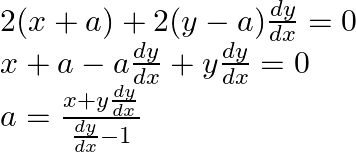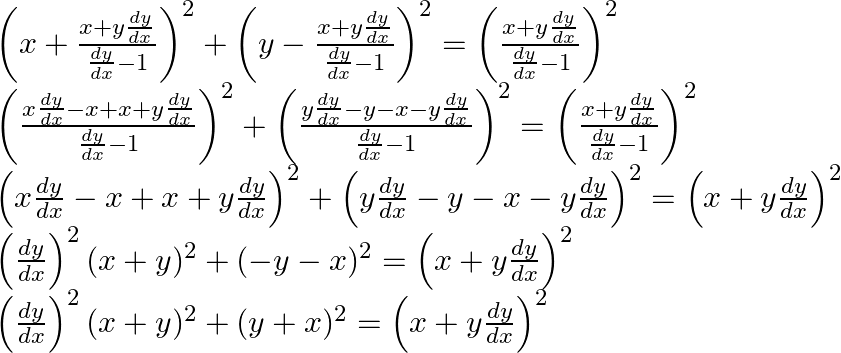Equation of the family of circles in the second quadrant and touching the coordinate axes
can be represented by
![]() , where
, where ![]() is an arbitrary constants.
is an arbitrary constants.
![]()
Differentiating the above equation with respect to ![]() on both sides, we have,
on both sides, we have,

Substituting the value of a in equation (1)

Rearranging the above equation

This is the required differential equation.
